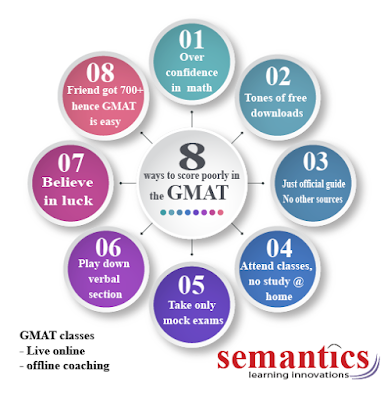Good news...........You can improve your score in the GMAT critical reasoning section quickly.
in less than 20 days...
You must know that in GMAT CR section, there are 15 question types.
For each question type there is a specific strategy.
Lets take an assumption question.
I teach my students this strategy
1. Identify the conclusion of the argument. Also identify the evidences,which the author uses to arrive at the conclusion.
2. Use the answer options
3. The correct answer option will be the reason ....... leading to the conclusion.
This strategy can be used for any assumption question.
Like this, each question type has a specific strategy.
Feel free to contact me if you want help in CR..My contact details is here
Facebook group: https://www.facebook.com/groups/semanticsGMAT
Linkedin profile: https://www.linkedin.com/in/georgeanand
Now lets discuss the problems, which might hamper your accuracy rate.
1. You are not able to identify the question types
When you read the question, you may not be able to identify if the question is assumption or weaken the argument or find the conclusion…. When you observe the question stems, you can observe the clue words and classify the questions..
Here is a simple activity which can help you identify the question stems..
Take any GMAT Official guide. Go to the CR questions. Classify the questions based on the question stems.
For example assumption based questions can have clue words like
- author assumes
- presupposes..
- additional evidence required...
You can use the explanations, at the end of the CR section, to identify the question stems...
Classify the questions based on the question stems… Don’t attempt to solve it..
Learn to identify the questions correctly. Once you identify then question type, then only you can apply the logic.
2. You forget the approach
Most of the time, students tackle a CR question by feel. They will be able to rule out 3 options. Then they toy with the last 2 options. This strategy is not reliable.
I would recommend that you remember the approaches for each question type. Maintain a rule book. Mug up the approaches.
3. You are not able to apply the concept/strategy into a question
This is a common problem.
You might know the approach, but you might struggle to apply this approach into questions
There is no shortcut. CR questions test your logical thinking. Logical thinking takes time to build
At the end of the day, While preparing for GMAT you are in the process of self discovery. The more questions you ask yourself.. more answers you will get..
Sometimes you will get the logic the very first time.. others might get it 5 times or 10 times later.
Yes, you have to break your head and crack it..
just don’t give up..
because everyone eventually gets it.
The activity i recommend:
Take any GMAT official guide...
Take 20 assumption questions from the OG. They will be scattered among the 250+ questions. Do them one after another using the assumption approach. Check your accuracy rate.
If accuracy is above 95% and above and you are able to easily eliminate all the options using logic..then you are fine
If accuracy is below 95%.. then you have to revise the strategy and work on all the questions again. For each question you have to derive the logic correctly. If you don’t get the logic, then revisit the questions. If you are not able to get the logic.. then seek help.
Feel free to ping me, I will guide you.
Remember getting the answer is insufficient. You must understand the logic.
You must also understand why the other options are wrong.
Note:
Remember CR unlike SC and RC, is not a volumes game. If 10 assumption questions you understand properly then all the assumptions you can do..because the logic is the same.
Repeat this activity for each question type.... You will be able to spot your weakness.
Only when you can identify your weakness..you can work on them....
Happy learning.





















